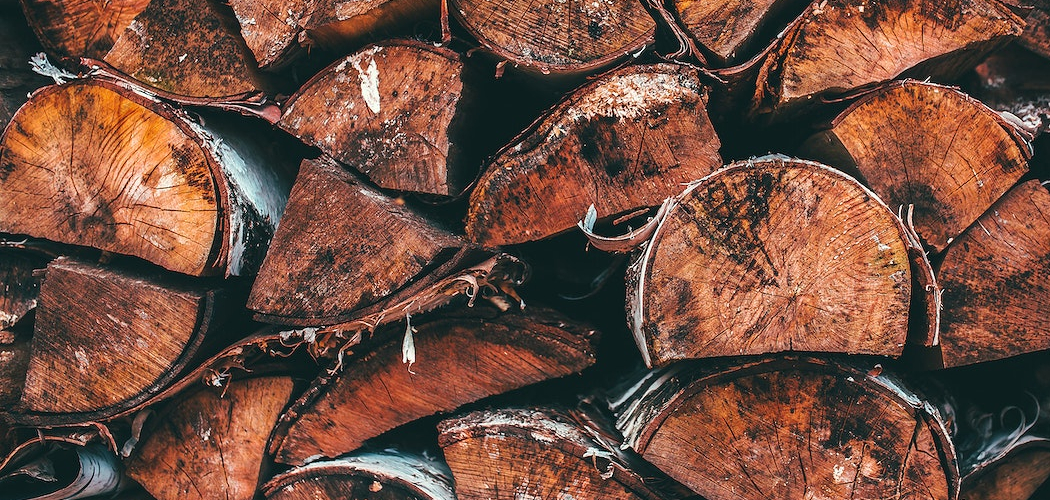As a homeowner, it’s important that you understand how to construct a safe and efficient fire pit. Properly stacking the logs in the fire pit is essential for ensuring the wood burns evenly and doesn’t cause smoke or sparks to fly out of control. This can help reduce the risk of a dangerous or damaging situation occurring.
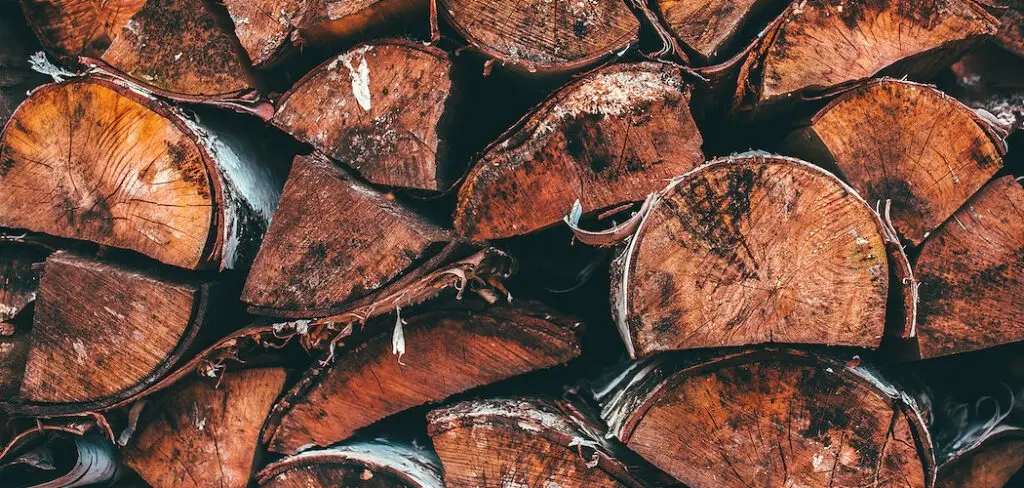
One of the main advantages of stacking logs in a fire pit is that it allows for better air circulation, which helps to create a hotter and more efficient flame. Building the stack properly will ensure that there are no dead spots within the fuel source, meaning that all of your logs will be exposed to heat from the burning fire.
This also makes the fire burn longer and hotter, with less smoke. In this blog post, You will learn in detail how to stack logs in a fire pit.
Step by Step Processes for How to Stack Logs in a Fire Pit
Step 1: Inspect All the Logs
Before stacking logs for a fire pit, it is important to inspect the logs and discard any that look rotten or are damaged. Start with the largest log first. This will form the base of your stack. Make sure to leave enough space between each log, so they aren’t too close together.
Step 2: Arrange Logs by Size and Type
Organize your logs according to size. Place the largest on the bottom, with progressively smaller logs placed on top of them. Also, make sure to arrange similar types of wood together (e.g., hardwoods like oak and ash together). This will allow for better air circulation and more efficient burning.
Step 3: Place the Logs in the Fire Pit
Once you’ve arranged your logs by size and type, place them into the fire pit. Start with the largest log first. Make sure to leave enough space between each log, so they aren’t too close together. This will ensure proper air circulation and better burning.
Step 4: Start the Fire
Once your logs are stacked in the fire pit, you can start your fire. Begin with kindling, such as newspaper or dry grass, to get the fire going. Once it is lit, add larger pieces of wood one at a time until all of your logs are burning.
Step 5: Enjoy the Fire and Stay Safe
Finally, enjoy your fire in a safe and responsible manner. Be sure to keep an eye on the fire at all times and never leave it unattended. Ensure no combustible materials are near the fire pit, and never use gasoline or other flammable liquids to start the fire. By following these simple steps, you can safely and effectively enjoy your fire pit experience.

Tips for How to Stack Logs in a Fire Pit
- Make sure that the fire pit is sufficiently large for the number and size of logs you plan to burn. Overloading a fire pit can lead to dangerous conditions like cracks in the fire ring or, in extreme cases, accidental fires.
- Before stacking your logs, clear away any debris from around the area that could fuel a fire. This includes any dry leaves, grasses, and other flammable items like wood chips.
- Lay out your logs in a way that will allow enough air to circulate between them for efficient burning; this helps you get the most out of each log.
- Place large logs at the bottom and smaller pieces of wood on top to create a stable base for the stack.
- Angle each log slightly toward the center of the fire pit to promote better air circulation and ensure that your logs will all burn evenly.
- If you plan to use kindling or tinder, place it at the very center of your log pile before lighting your fire, as this will give you the best results.
- Once your logs are stacked and ready to be lit, make sure there is sufficient space between them for the flames to spread evenly throughout the stack.
- Always keep an eye on any open flame, and never leave it unattended. A small flame can quickly become dangerous if it is not monitored and controlled.
Following these tips will help ensure that your Stacking Logs in a Fire Pit experience is safe, enjoyable, and successful.
How Do You Avoid Sparks When Lighting a Log Stack in the Fire Pit?
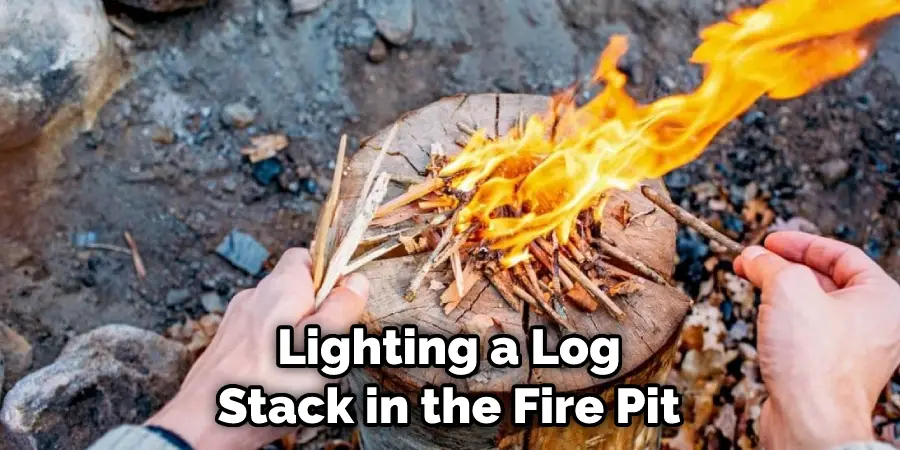
When lighting a log stack in the fire pit, paying attention to the kindling used and ensuring that the logs are stacked correctly is important. If done improperly, sparks may fly out of your fire pit. Here are some tips for avoiding sparks when lighting a log stack in the fire pit:
- Use Dry, Seasoned Wood: Ensure the logs you use for the fire pit are dry and have been aged and stored correctly. Avoid using green or unseasoned wood as it will produce more smoke and can spark in your fire pit.
- Stack Your Logs Properly: When stacking the logs, create a crisscross pattern with them to ensure good airflow and reduce the risk of sparks. Leave some space between each layer so that air can pass through more freely, allowing the fire to burn more efficiently.
- Use an Appropriate Kindling: Make sure that your kindling is dry and well-aged. Avoid using materials like newspaper or paper towels, as they can spark a fire. Instead, opt for kindling, such as small twigs or dry cardboard, to start the fire.
- Arrange Your Log Stack Strategically: Place it away from any flammable material and ensure it is not too close to a wall or other structure. Also, keep an eye out for overhanging branches or other combustible materials that may be overhead.
By following these tips, you can ensure that your log stack is safe and will not spark when lighting it in the fire pit.
How Often Should You Clean Out the Ashes From Your Fire Pit?
Cleaning out ashes should be done as often as needed to keep your fire pit safe and burning efficiently. How often this is will depend on the size of your fire pit, how much wood you’re burning, and the weather conditions. If you frequently add wood to your fire pit, you may need to clean out the ashes every few days.
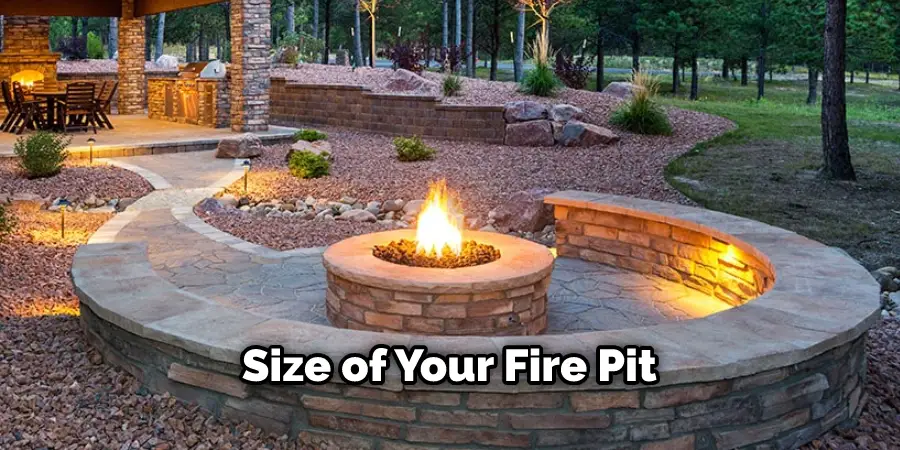
Ash buildup can reduce the amount of oxygen that gets to your fire, making it difficult to light and keep burning. Cleaning out the ashes also helps to maintain even heat throughout the logs in your fire pit.
Generally, it’s a good idea to check on your fire pit every couple of days and clean out the ashes if needed. To clean out the ashes, carefully scoop them out with a shovel and dispose of them in a metal container. By following these simple steps, you can ensure your fire pit remains.
Are There Any Special Considerations When Stacking Logs in a Windy Area?
When stacking logs in a windy area, there are some special considerations to bear in mind.
- Secure the logs with heavy rocks or other heavy objects if possible; this will keep them from blowing away.
- Place heavier logs at the bottom of the pile and lighter logs at the top; this will help ensure that the wind does not disturb the stack.
- Stack logs in a tepee formation; this will help increase its stability and reduce the effects of the wind.
- Make sure to leave gaps between each log; this will allow air to flow through, allowing for better combustion and reduced risk of smoke issues due to lack of airflow.
- Make sure to stack the logs high enough that they are not in danger of being carried away by the wind; this will also prevent them from rolling away if the wind picks up suddenly.
- Place a heavy object on top of the stack; this will help keep it secure and prevent it from blowing away.
- Make sure to check the stack regularly; this will help ensure that it remains secure and aligned throughout windy weather.
- If necessary, use sandbags or other heavy objects to weigh down the logs and keep them in place; this will prevent them from being blown away by strong winds.
Following these steps will help ensure that your fire pit logs remain secure, even in windy areas. This will allow you to enjoy a safe and successful burning experience.
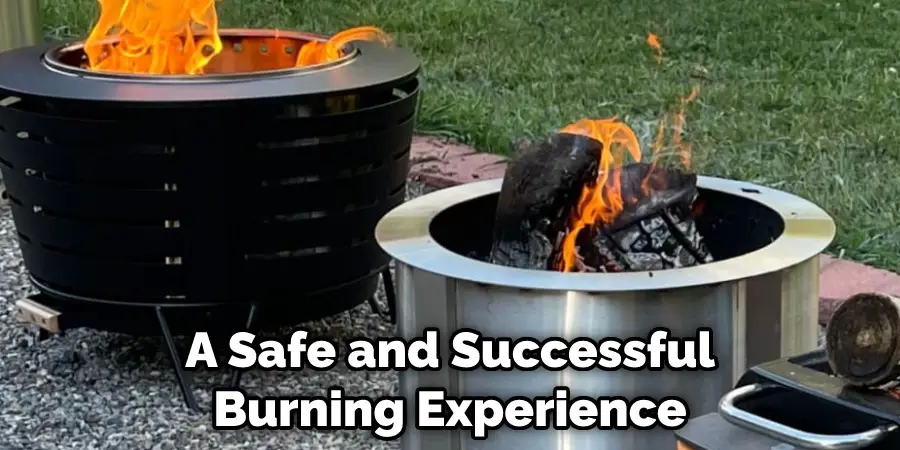
Conclusion
One of the main disadvantages of stacking logs in a fire pit is that it can be difficult to achieve an even burn. When logs are stacked too closely together, they can block airflow and prevent the fire from burning efficiently. This can result in smokey fires, low heat output, or a complete lack of combustion.
Additionally, logs placed too close together can cause the fire to burn out prematurely due to a lack of oxygen.
In conclusion, stacking logs in a fire pit is essential for creating a safe and enjoyable campfire experience. By following the tips outlined in this guide, you can ensure that your fire will burn efficiently and safely while also keeping it visually appealing. Start by preparing the area surrounding the fire pit, then gather your wood before stacking the logs appropriately.
I hope this article has been beneficial for learning how to stack logs in a fire pit. Make Sure the precautionary measures are followed chronologically.

